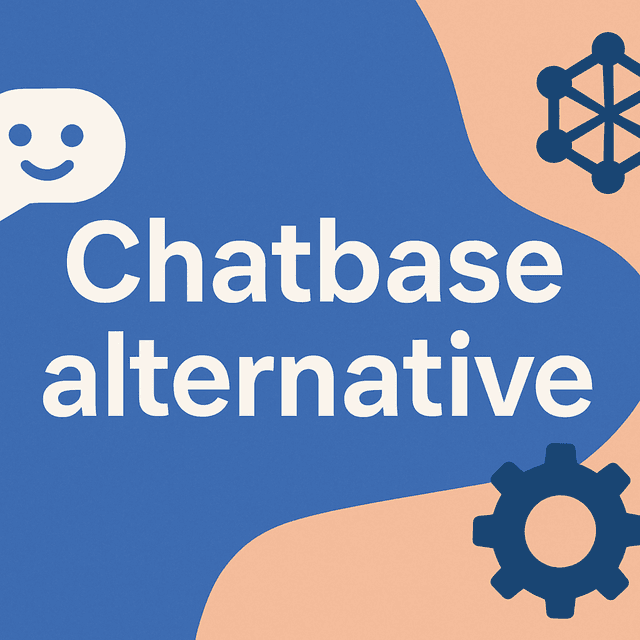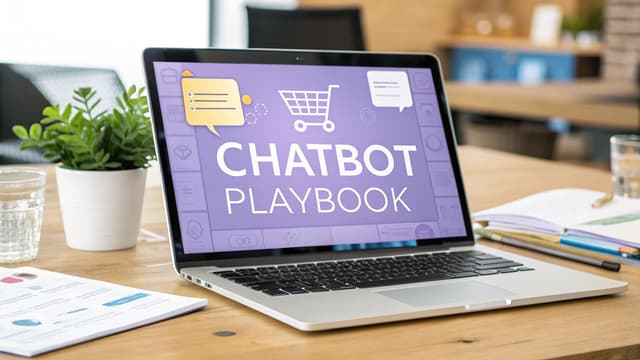The Evolution of Lead Qualification Through Chatbots
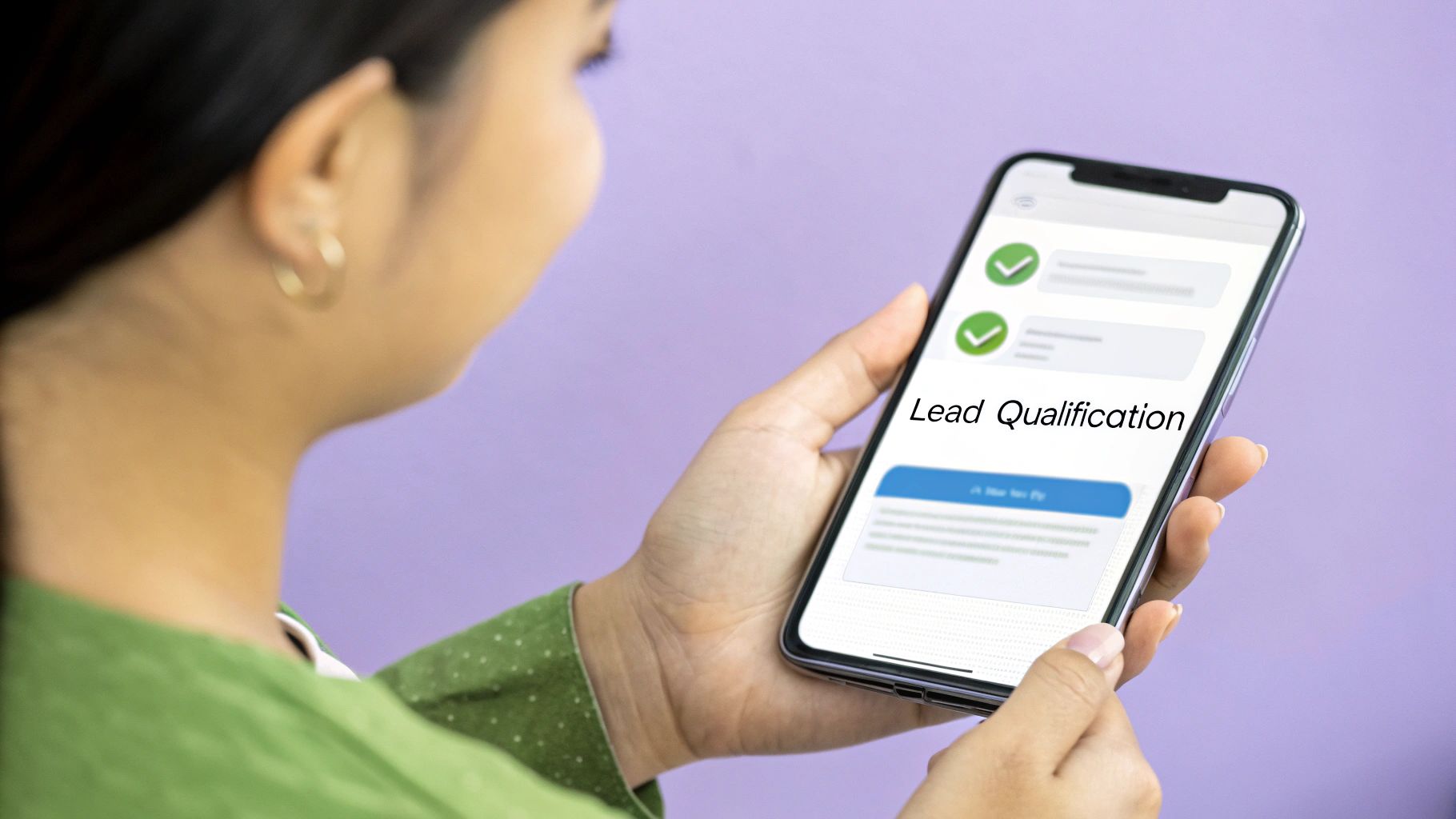
Traditionally, qualifying leads was a manual, time-consuming process, often resulting in delays and lost opportunities. Learn how chatbots qualify leads and boost your conversions. chatbots lead generation But chatbots are transforming this. AI-driven qualification enables faster responses and more meaningful interactions with potential customers. This allows businesses to connect with leads promptly and engage them effectively.
Imagine a potential customer browsing your website late at night. A chatbot can instantly engage them, collect vital information, and pre-qualify them as a lead, rather than making them wait until business hours for answers. This immediate engagement can significantly boost conversion rates, as quick responses often lead to increased customer satisfaction.
Furthermore, prospects are sometimes more comfortable sharing information with a chatbot than a human representative, providing businesses with more comprehensive qualifying data. This stems from the perceived anonymity and unbiased nature of interacting with a chatbot.
This increased comfort translates into higher-quality data and a more precise understanding of prospect needs. This allows sales teams to personalize their follow-up strategies and focus on high-potential leads. Chatbots are becoming increasingly impactful for lead qualification, particularly in the EdTech sector. Chatbot-led qualification in this field costs approximately $119 per month, showcasing the cost-effectiveness of automating this process. Find more detailed statistics here This efficiency lets businesses concentrate resources on leads with the highest conversion potential.
How Chatbots Improve Lead Qualification
Chatbots offer significant advantages compared to traditional lead qualification methods. These benefits are changing how businesses engage with potential customers and manage sales pipelines.
-
24/7 Availability: Chatbots operate continuously, engaging leads anytime they visit your website or interact with your brand online. This constant availability guarantees no missed opportunities, especially in a global market with diverse time zones.
-
Personalized Interactions: AI-powered chatbots can customize conversations using individual user data and past interactions. This personalized approach creates more engaging and relevant discussions, improving the chance of converting prospects into qualified leads.
-
Faster Response Times: Chatbots provide instant replies to inquiries, offering immediate answers to common questions and qualifying leads in real-time. This rapid response time is essential in today's business world, where quick answers are expected.
-
Consistent Messaging: Chatbots deliver consistent messaging across all customer interactions, reinforcing your brand identity and ensuring every potential lead receives the same accurate information.
These improvements in lead qualification are optimizing sales funnels and boosting profitability. Automating these initial interactions allows sales teams to dedicate more time to closing deals. This more efficient approach leads to improved overall sales performance.
Why Leading Brands Are Shifting to Chatbot Qualification
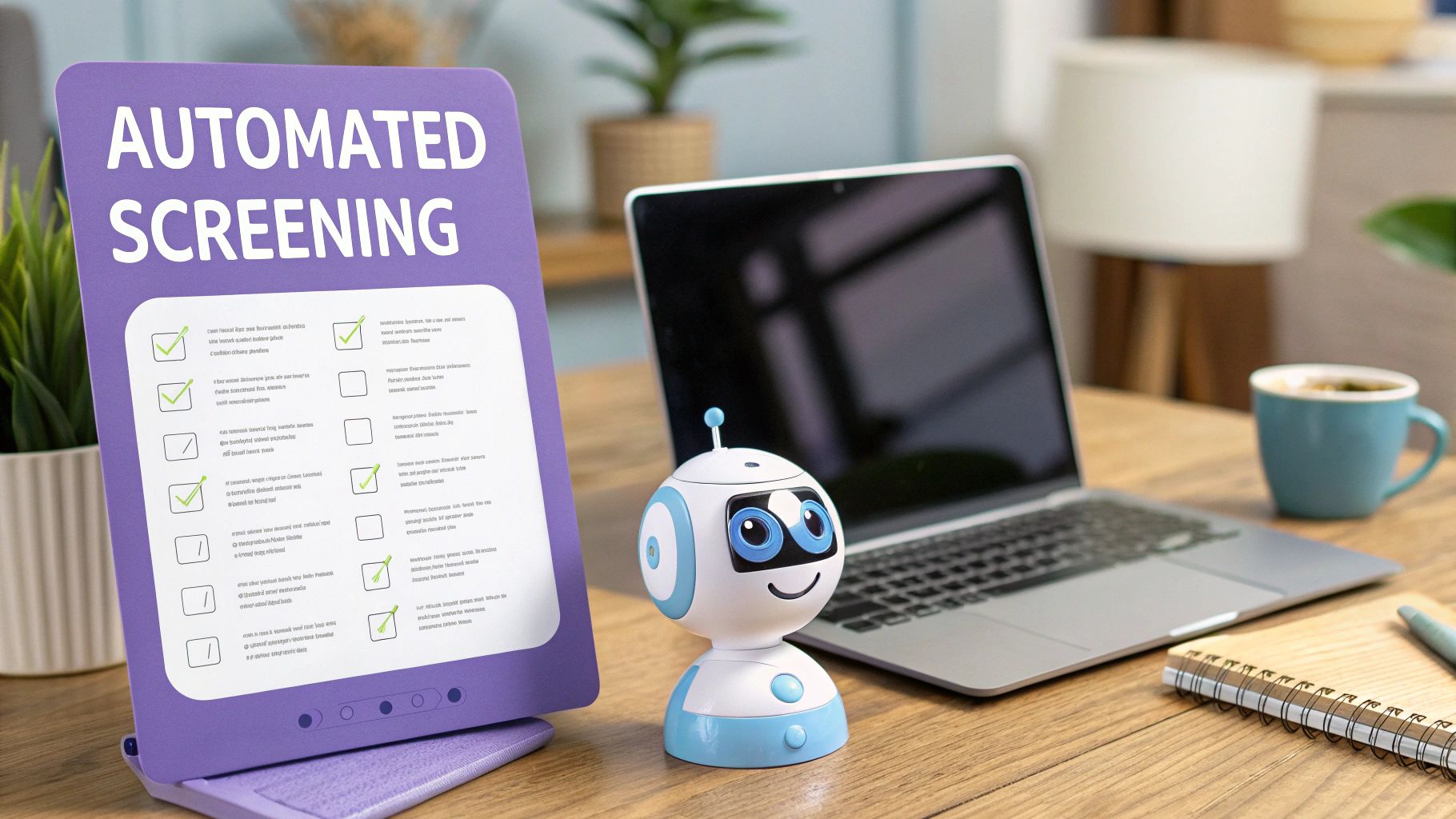
Beyond the buzz, there's a strong business reason for integrating chatbots into lead qualification. Companies are seeing real advantages in automating this essential sales process step. The main drivers are the need for better efficiency, higher lead quality, and a more productive sales team.
Imagine a sales team spending hours sifting through leads, manually identifying the best prospects. Contrast that with a chatbot instantly filtering and ranking those leads according to pre-set criteria. This automation frees up the sales team, allowing them to focus on closing deals. It also leads to another benefit: gathering more valuable data.
Digital strategies have accelerated the evolution of lead qualification. For instance, consider the numerous tactics available for Lead Generation for IT Services. Chatbots play a crucial role in both generating and qualifying leads. In fact, 36% of companies use chatbots for lead generation, while 62.5% use them for lead qualification. Discover more insights about chatbot usage. This is more than a passing trend; it represents a fundamental shift in how businesses interact with potential customers.
Boosting ROI With Chatbot Qualification
The return on investment (ROI) from chatbot qualification can be significant. Automating the initial sales steps often leads to a considerable drop in cost-per-qualified-lead. This cost reduction is a major motivation for many companies adopting chatbots.
The advantages go beyond cost savings. Increased sales team productivity and job satisfaction are also key results. When sales representatives are relieved of tedious manual tasks, they can focus more on building relationships and closing deals. This improved focus can translate to higher close rates and boosted overall revenue.
Industry Success Stories
Some industries are seeing particularly impressive results with chatbot lead qualification. E-commerce businesses, for example, use chatbots to help customers navigate the buying process, answer product-related queries, and collect data on purchase intent. This personalized interaction improves the customer experience and boosts conversion rates.
In the B2B world, chatbots are optimizing the lead qualification process by gathering important information and identifying promising leads. This enables sales teams to prioritize their time and target the best prospects. The success of these applications is prompting other industries to consider the possibilities of chatbot qualification.
The Science Behind How Chatbots Qualify Leads
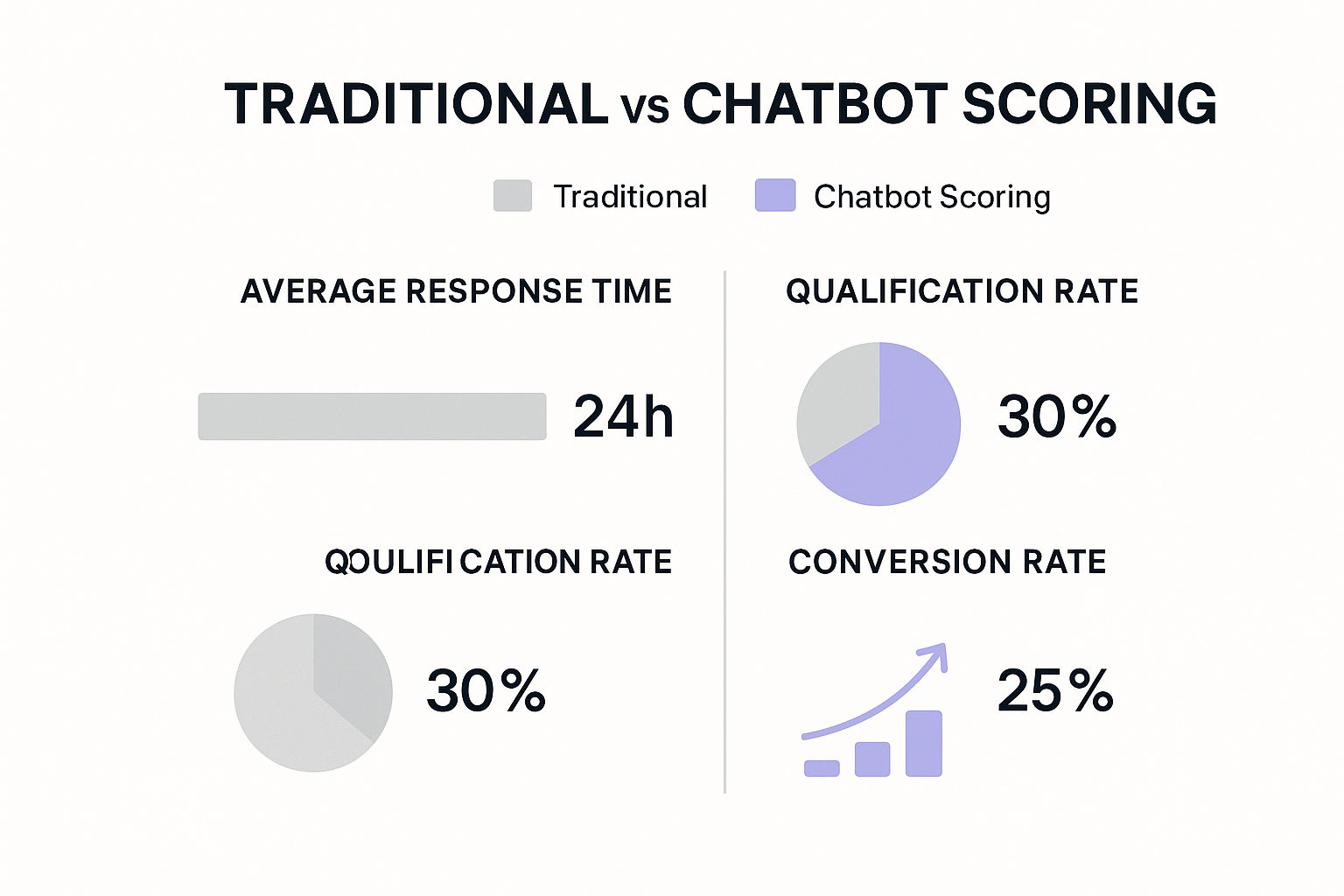
This infographic illustrates the core differences between traditional lead scoring and the improvements offered by chatbot-based scoring. It focuses on three key metrics: response time, qualification rate, and conversion rate. Chatbots clearly outperform traditional methods in each of these areas.
The enhanced speed, qualification, and conversions demonstrate the potential of automating lead qualification with chatbots. Let's explore how these AI-powered tools achieve such impressive outcomes.
Understanding Natural Language Processing (NLP)
Natural Language Processing (NLP) is the engine behind effective lead qualification chatbots. This technology empowers chatbots to understand, interpret, and respond to human language, creating more natural and meaningful conversations.
For example, a chatbot can analyze a prospect's answers to questions about their budget or needs. This analysis helps the chatbot understand their level of interest and potential to become a customer. This intelligent processing is crucial for filtering out less promising leads and prioritizing those most likely to convert.
NLP also helps chatbots identify buying signals. These signals are specific words or phrases that indicate a strong intention to make a purchase. Recognizing these signals provides valuable insights into a prospect's mindset.
Psychology-Backed Questioning Strategies
Effective chatbot interactions aren’t random; they're built on psychology-backed questioning strategies. By carefully arranging the order of questions, chatbots can gather important qualifying information without being intrusive. This measured approach provides a good user experience while optimizing data collection.
Intelligent branching logic allows conversations to adjust dynamically based on the prospect's replies. This ensures questions stay relevant, keeping potential customers engaged and yielding higher quality data. One of the significant advantages of chatbots is their ability to engage potential customers better than static forms.
In fact, chatbot-driven quizzes outperform static forms in lead qualification by about 20%. Explore this topic further.
Intelligent Scoring Systems
After gathering prospect information, intelligent scoring systems analyze the data to determine lead quality. These systems assign scores based on criteria such as demographics, budget, stated needs, and identified buying signals. This approach creates a more objective lead evaluation process.
Importantly, these scores are not fixed; they change as the prospect continues to interact. This dynamic scoring reflects the evolving nature of lead qualification. The system constantly adapts to new information.
To help illustrate the key differences between these two approaches, let's look at a comparison table:
Comparison: Traditional vs. Chatbot Lead Qualification Methods
This table compares key aspects of traditional form-based lead qualification with modern chatbot-driven approaches.
| Qualification Aspect | Traditional Forms | Chatbot-Driven Approach | Improvement |
|---|---|---|---|
| Response Time | Can be slow, often hours or days | Immediate, typically within seconds | Significantly faster |
| Engagement | Often low due to static nature | High due to interactive experience | More engaging |
| Data Quality | Limited to form fields | Can gather richer, contextual data | More comprehensive |
| Lead Qualification Rate | Can be lower due to delays and lack of engagement | Significantly higher due to real-time qualification | Increased efficiency |
| Cost-Effectiveness | Requires manual follow-up, often expensive | Automates much of the process, reducing costs | More cost-effective |
This comparison clearly shows the benefits of incorporating chatbots into lead qualification efforts. The improvements in response time, engagement, and data quality lead directly to a higher qualification rate and better cost-effectiveness.
Conversation Analysis for Enhanced Insights
Leading companies are now going beyond basic lead scoring. They are using conversation analysis to find subtle cues about purchase intent. This advanced technique examines the details of a prospect's language, tone, and sentiment to spot patterns human agents might miss.
For example, a chatbot might identify hesitation or uncertainty in a prospect’s responses. This signals a need for further explanation or reassurance. This nuanced understanding enables sales teams to personalize follow-up communications and improve conversion rates.
Crafting Conversations That Convert Prospects to Leads
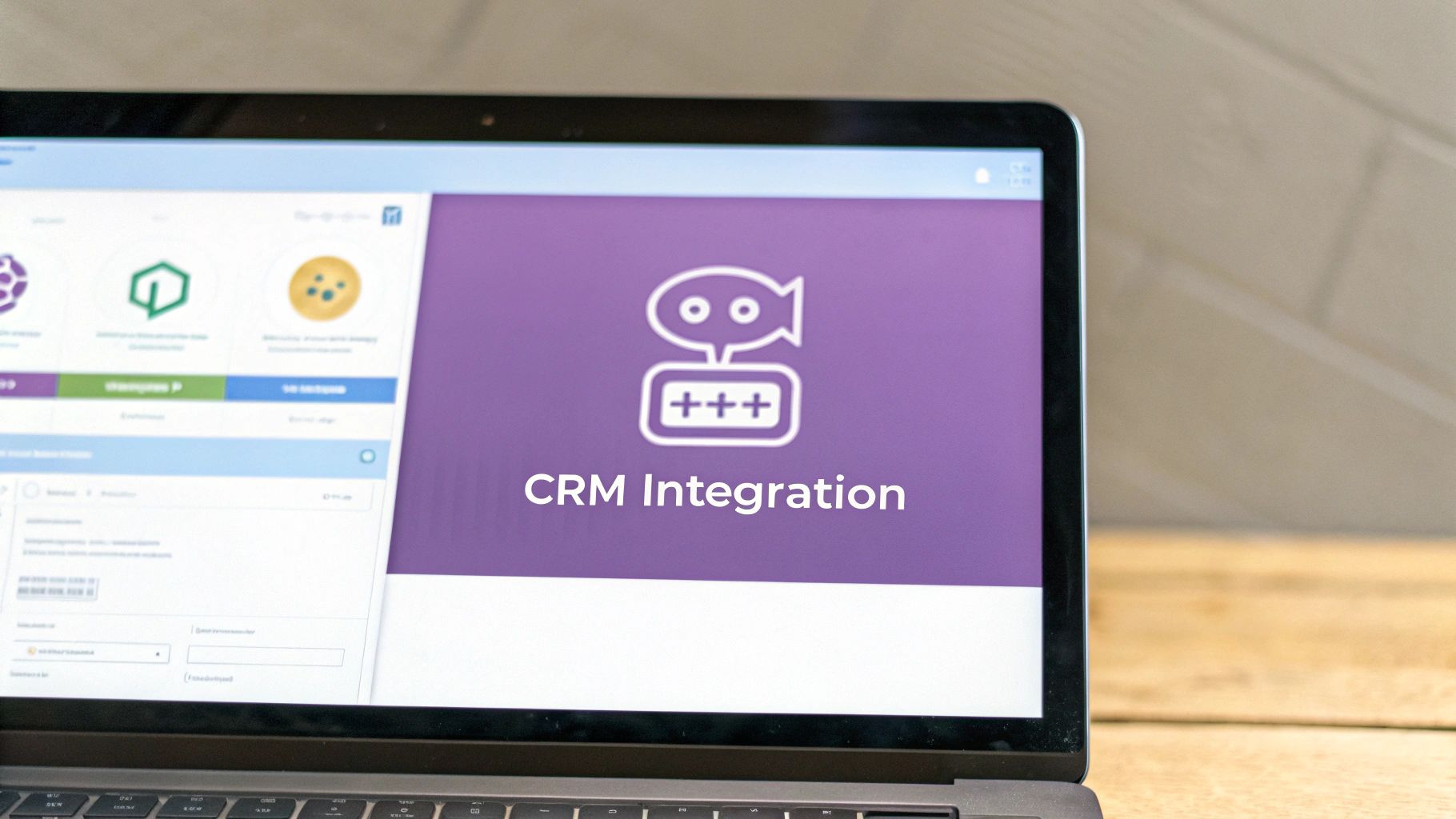
Creating effective chatbot qualification workflows involves more than just technical skills. It requires a deep understanding of how to craft engaging and natural conversations. This means designing chatbot interactions that feel intuitive for the user while simultaneously collecting the necessary qualification data. Let's explore how to build these conversations and ensure a positive user experience.
Strategic Question Sequencing and Branching Logic
Effective chatbot qualification hinges on the strategic sequencing of questions. Imagine building a house; you wouldn't start with the roof. Similarly, beginning a conversation with intrusive questions about budget or company size can be off-putting and deter potential leads.
Instead, start with broader, more engaging questions related to the prospect's needs and pain points. This approach helps build rapport and encourages continued interaction. Think of it as laying the foundation for a strong relationship.
For example, a chatbot for a project management software company might begin by asking, "What's your biggest challenge in managing projects right now?" From there, based on the prospect's response, the chatbot can use branching logic to personalize the subsequent questions. This tailored approach gathers more relevant information and creates a more engaging experience.
Handling Objections and Building Rapport
Just like human sales representatives, chatbots must handle objections with grace. If a prospect expresses hesitation, the chatbot should acknowledge their concern and offer a helpful response. This demonstrates empathy and builds trust.
For instance, if a prospect mentions budget limitations, the chatbot could offer information on flexible pricing or highlight the product's potential long-term cost savings. This demonstrates understanding and proactively addresses concerns.
Adding elements of natural conversation, such as emojis or friendly greetings, can further enhance the user experience. These small touches make the interaction feel more human and less robotic, contributing to increased engagement and reduced lead abandonment.
Setting Qualification Thresholds and Seamless Handoff
Once the chatbot has gathered the necessary information, predefined qualification thresholds determine if the lead is suitable for sales follow-up. These thresholds should align with your specific sales process and ideal customer profile. A lead might be qualified based on criteria like company size, industry, budget, and expressed needs.
A smooth transition from chatbot to a human sales representative is crucial. This includes ensuring the sales team receives the collected qualification data in a clear, actionable format. Integrating your chatbot with your CRM system can automate this transfer, equipping your sales team with valuable context for effective follow-up. This prevents information loss and promotes a personalized, efficient sales process. A well-executed handoff significantly contributes to higher conversion rates.
FlowGent AI’s platform enables you to build these conversational flows and integrate them with your existing tools, making lead qualification through chatbots both efficient and effective. Learn how to implement AI agents to qualify leads on your website here.
Measuring What Matters: Optimizing Qualification Success
How can you tell if your chatbot is effectively qualifying leads? This section goes beyond vanity metrics to focus on the key performance indicators (KPIs) that truly impact your bottom line. We'll explore insights from analytics professionals and marketing executives, uncovering which KPIs provide the most meaningful data on chatbot qualification effectiveness.
For instance, tracking the conversion rate from lead to opportunity shows how well your chatbot filters and nurtures potential customers. This metric is essential for understanding the chatbot's overall impact on your sales pipeline. Also, monitoring the time spent by qualified leads in the sales process can highlight areas for improvement and identify bottlenecks. This data is invaluable for refining your sales strategy and optimizing the customer journey.
Establishing Effective Tracking Systems
This section also explores how to build tracking systems that capture the most relevant data without overburdening your team. Finding this balance is crucial for gaining meaningful insights without creating unnecessary work. This includes using tools that integrate with your current systems and offer clear, concise reporting.
For example, CRM integration can automate the transfer of lead information collected by your chatbot into your sales database. This simplifies the process and eliminates manual data entry. Using customized dashboards in your analytics platform can highlight the most important metrics for your specific business needs. This targeted approach lets you quickly assess chatbot performance and pinpoint areas for optimization without getting lost in a sea of data.
A/B Testing for Optimized Conversation Flows
A/B testing is vital for optimizing chatbot qualification flows. This involves comparing two slightly different conversation versions to determine which performs better. Even small adjustments can have a big impact. These changes could be as simple as tweaking the wording of a question or rearranging the order of questions.
Imagine testing two different greetings: one formal and one informal. Perhaps the informal greeting leads to a higher engagement rate. This simple example demonstrates the power of A/B testing to refine your chatbot's communication. You could also test different call-to-actions. A more direct call-to-action might encourage more leads to complete the qualification process. These minor changes can yield surprisingly significant improvements.
Continuous Improvement Through Feedback and Analysis
This section also presents strategies for continuous improvement, ensuring your chatbot qualification process adapts to changing customer behavior. This involves regularly reviewing performance data and adjusting your strategy accordingly.
This iterative approach keeps your chatbot relevant and effective over time. Integrating customer feedback into your analysis provides valuable insight into which conversation aspects resonate most with your target audience. This helps you continually refine your chatbot's communication and maximize its impact.
To help you track and optimize your chatbot's performance, we've compiled a table of essential metrics:
Key Metrics for Evaluating Chatbot Lead Qualification Success
Essential performance indicators to track when measuring the effectiveness of chatbot lead qualification systems
| Metric | Definition | Target Range | Optimization Strategies |
|---|---|---|---|
| Lead Qualification Rate | Percentage of leads deemed qualified by the chatbot | Industry-specific, but generally aim for 20-40% or higher | Refine qualification criteria, improve question flow |
| Conversation Completion Rate | Percentage of users who complete the chatbot qualification process | Aim for 70% or higher | Shorten the conversation, make it more engaging |
| Conversion Rate from Lead to Opportunity | Percentage of qualified leads who become sales opportunities | Industry-specific, but generally aim for 10-20% or higher | Improve lead nurturing and handoff to sales |
| Average Qualification Time | Time it takes for a chatbot to qualify a lead | Aim for under 5 minutes | Optimize question flow, use pre-qualification filters |
FlowGent AI provides a comprehensive platform for building and optimizing chatbot qualification workflows. It helps businesses automate lead qualification and integrate seamlessly with existing CRM systems, boosting efficiency and driving conversions. Learn more about how FlowGent AI can transform your lead qualification process.
Creating the Perfect Handoff: From Chatbot to Closing
The true strength of using chatbots for lead qualification lies in the seamless transfer of these leads to your sales team. This involves establishing a handoff process that your sales team appreciates and ensuring the data they receive is both valuable and easily digestible. This bridge between chatbot and sales representative is crucial for converting qualified leads into paying customers.
Empowering Sales Teams Through Efficient Handoff
Imagine a sales team bombarded with a disorganized mess of data from a chatbot interaction. This scenario leads to extra work and frustration. A well-structured handoff, however, provides sales representatives with the necessary information in an accessible format. This saves valuable time, allowing them to concentrate on what they do best: building relationships and closing deals. Many sales leaders, initially skeptical of chatbot qualification, now recognize its benefits when combined with a robust handoff process.
This change in perspective stems from experiencing the increased efficiency and focus a smooth transition provides. For example, equipping sales representatives with a concise summary of the chatbot conversation, including key qualifying details and identified needs, prepares them for a personalized follow-up. This facilitates more targeted and effective sales strategies.
Actionable Data and Context-Rich Formats
Effective handoff hinges on presenting data in a usable format for salespeople. This means going beyond raw data and providing context. Think of it as providing a detective with clues, rather than simply a mountain of evidence. Presenting information in a narrative format helps salespeople understand the lead's motivations and tailor their approach accordingly.
This might involve using visual formats like charts or timelines to highlight key information at a glance. This approach ensures that valuable data is easily absorbed and used effectively. Consider a prospect sharing their preferred contact method with the chatbot. Relaying this seemingly minor detail to the sales team can significantly impact their follow-up strategy and ultimately improve their connection rate with the lead.
Integrating With Existing Sales Tools
A smooth handoff also relies on integrating your chatbot with your existing sales systems. Think of this as connecting different components of a machine. Seamless integration eliminates technical friction and ensures smooth information flow between the chatbot and your sales team.
This often involves connecting the chatbot to your Customer Relationship Management (CRM) system. For example, imagine a chatbot automatically updating a lead's CRM record with information gathered during the conversation. This eliminates manual data entry, saving time and preventing errors. This automated process allows sales teams to quickly access and analyze the latest information on each lead. Integration with messaging platforms like Slack can also streamline communication. This can be as simple as sending a notification to a sales representative when a lead is qualified by the chatbot. This real-time alert enables immediate follow-up and maximizes conversion potential. Furthermore, integrating with sales enablement tools can provide sales representatives with readily available resources, such as product information or case studies, to support their conversations. Measuring the success of chatbot lead qualification involves understanding which metrics to track. For a broader perspective, you can also explore how to efficiently track SMS campaigns.
Leveraging Conversation Transcripts for Sales Intelligence
High-performing organizations utilize chatbot conversation transcripts as valuable sales intelligence. These transcripts offer more than just data; they provide insights into the prospect’s thought process and specific needs. This valuable information informs personalized follow-up strategies and significantly boosts close rates.
For instance, analyzing how a prospect responded to specific questions about their business challenges or purchasing timeline provides the sales team with a deeper understanding of their needs and motivations. This knowledge allows them to tailor their pitch and personalize their communication. This personalized approach resonates with prospects and increases the likelihood of closing a deal. This approach transcends simple lead qualification and transforms the chatbot into a powerful sales intelligence gathering tool.
Boost your lead qualification and customer engagement with FlowGent AI. Our no-code platform empowers you to build intelligent AI agents that seamlessly integrate with your existing tools and automate key processes. Visit FlowGent AI to discover how we can help you scale your business and drive growth.

